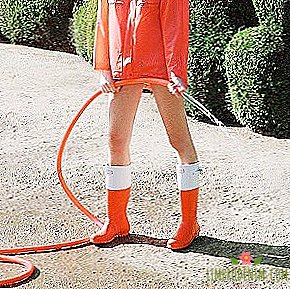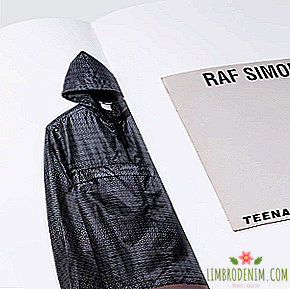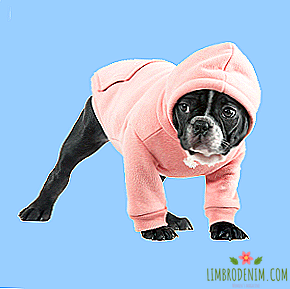How did the standards of model appearance change
A single standard of beauty which publicly and unofficially dominates in modern society, largely due to the fashion industry and the media. Models taken as the standard look at us from the covers of magazines standing in a row at a gas station, from a billboard on an escalator, from packing tights and even from the window of any clothing store under the guise of a plastic dummy. Every day, our dissatisfaction with our appearance grows unnoticed: after all, many of us will never have such long legs or narrow hips. How did it happen that out of all the incredible diversity of human beauty only one hit the “first class”? We understand how the requirements for the female model appearance have changed and what influenced it.

In the modern celebrity institute, the models occupy the top lines, embodying the image of a luxurious and easy life: it seems enough to be born beautiful and get to the right place - and now six-figure sums start pouring into your account, and you just walk on the catwalk in expensive clothes and take pictures. Firstly, this is not the case (see “eating disorders”, “terrible competition”, “exhausting fashion weeks”, “poverty”), and secondly, the position of models in the hierarchy of the fashion industry has not always been perfect. At the beginning of the 20th century, girls who demonstrated fashion collections were equated with the marginal class: this profession was considered inappropriate for "decent" women, so girls from poor dysfunctional families entered the models. They were called "mannequin" ("model" were exhibition samples of the collection), which obviously dehumanized a woman and reduced her perception and role to the stand for clothes. It is this connotation "empty doll with perfect proportions of face and body" that will continue in the industry until the 1970s, and in society - much longer: it is from here that the habit of neglecting to call models "hangers" comes from.
The first designer who decided to use catwalk shows instead of static presentations is considered to be London fashion designer Lucy Duff Gordon. She herself brought up fashion models for her fashion house, giving them stage names, which also brought associations with priestesses of love. By 1910, almost all Parisian couturiers kept their own fashion models on staff, in two categories: some showed collections at the show, others to private clients in the atelier. At this, their differences ended. They all had regular features and a harmonious physique. Simply put, they were pretty by the standards of time - girls often dreamed of becoming an actress but were screened out by Hollywood.
There was no such thing as rigid model parameters expressed in centimeters. On the contrary, the designers used models of different builds to show the variability of their models. At that time, the models did not personify the unattainable ideal of beauty - on the contrary, they had to imitate the proportions of the average couture clients, whether Parisian aristocrats or wives of American nouveau riches. Some couturiers, including Jean Patou, even subscribed to fashion models from America, as it was believed that French women with their type of figure would not be able to “sell” outfits to American clients.
20th


In the 1920s, the concept of clothing designed to sculpture the body and emphasize its curves, driving the woman into the rigid shackles of the corset, replaced the idea of liberation and relaxation. Thanks to the massive sports enthusiasm, a slim, toned figure comes into fashion, and the straight silhouette of dresses hints that a beautiful woman is a woman without roundness. Moreover, Madeleine Vionne at this time says that the new corset for a woman is her own body. Designers understand that new styles of dresses look best on very young, not always formed girls, and so the profession of fashion models is getting younger. However, femininity was important. In the second half of the 20s, girls with a decisive appearance Marion Morehouse and Lee Miller, the future muse of Man Ray and a military special correspondent, become the faces of an emancipated generation. They differed from the popular in the 20th type of frivolous and liberated flapper girl in their noble-mature appearance and manners.
30s


We know the golden era of Hollywood in the 1930s as an era that spawned the concept of glamor with the cult of women, luxurious from a snow-white fur coat to the tips of nails. Hollywood has proposed a new, very tenacious ideal of beauty - inaccessible divas, as if without any changes coming from the screen into reality and back. At this time, classic beauty comes into vogue, accentuated by dramatic makeup: high cheekbones, arched eyebrows and deep-set eyes. However, for models this decade was not the most profitable time - for shooting in magazines they were increasingly preferred by Hollywood stars. In favor were the models that broadcast the same Hollywood chic: Helen Bennett, Russian beauty Lyudmila Fedoseeva and Swede Lisa Fonsagrives, who is called the first supermodel in history.
40-50th


The world of glamor crashed on World War II, like a crystal vase, and silks and diamonds were replaced by discreet outfits as if from the shoulder of Ingrid Bergman from Casablanca. The post-war era inevitably dictated a different course: fashion photographers get rid of Hollywood aplomb in their work, and the healthy and sporting lifestyle becomes the dominant trend. Models still embody elegance and impeccable femininity, but they look much more earthly creatures than the standards of the previous decade. The exemplary beauties of the second half of the 1940s and the epitome of the ideal of natural beauty were Betty Tret and Liz Benn.
It is at this time that one of the key moments in the modeling industry is taking place: the division into runway, that is, high fashion, and commercial models — those who could not count on the cover of Vogue or Harper's Bazaar even with great demand and fees. After 1947, the standards of feminine beauty will be formed into a well-defined canon: high breasts, thin waist, outstanding hips. And here, of course, it was not without Christian Dior and his concept of New Look. The silhouette proposed by Dior brought the leaders of the model industry of girls with the parameters of 96-63-94 cm, which by today's standards is on the verge of professional suitability - today with such volumes of girls they expect only Victoria's Secret casting. But in the 50s, models Dorian Leigh, Dovim, Susie Parker, Jean Patchett, Sunny Harnett became the personification of Dior's refined femininity and new ideals of noble beauty.
60s

However, the beauty standard “according to Dior” was fixed for a short time - exactly before the beginning of the new decade. The sixties were a turning point, forever changing the perception of fashion. If before that the main clients of fashion couturiers were adult women of high origin and income, then the 1960s, with their craze for youth subcultures, put designers before the fact: from now on, young people are ordering music. All these fundamentally new A-silhouettes and extremely short length of skirts, coupled with the general infantilism of fashion, required new faces and bodies. They are thin girls with doll faces: Twiggy, Gene Shrimpton, Penelope Three, Patti Boyd and Linda Keith. Their pubertal image and boyish figure were a fresh sip after the absolute dominance of mature feminine beauty in the spirit of femme fatale. The fashion industry of the 60s turned another small revolution, canceling the border between fashion models and photo models.
70s


It will take another ten years before the profession of the model will be considered a truly prestigious affair. It is 1970 that we owe the phenomenon of supermodels, with the advent of which the fashion industry will never be the same. With the advent of the 70s, models become one of the symbols of pop culture, appearing on the same honor roll with famous actresses and singers. In the girls, who became the main faces of the fashion industry of the 70s and the succeeding 80s, there was no trace of the teenage infantilism of their predecessors. They were strong, spectacular women with pronounced sexuality and no less pronounced sexual characteristics. The era of glamor is back. His ambassadors were Vogue's favorite and the first model to sign a contract with cosmetic giant Revlon, Lauren Hutton, as well as Jerry Hall, dark-skinned muse Yves Saint Laurent and David Bowie Iman's future wife, Marisa Berenson, Elsa Schiaparelli's granddaughter, whom Saint-Laurent called " '70s girl, Sports Illustrated star Christie Brinkley, as well as Dale Haddon and Janice Dickinson.
80s


A decade of aerobics, chemical waving and leggings was led by sports American Jane Fonda and Cindy Crawford. According to the video tutorials, the Funds (and later Crawford) were engaged in all the women of the planet, and even some men. The cult of the body defined new ideals, and therefore the standards of model appearance. The main thing was feminine forms, honed classes in a fitness room. Models have finally formed a division of the heroines of modern culture, and making a brand from one’s own name has become a new tradition. From now on, the models were not supplements to luxurious designer collections, but public opinion leaders who were ready to pay incredible money for the work: it was their faces and figures that triggered the mechanism of mass sales of anything.
90s


Formed rules naturally gave rise to the golden era of supermodels, whose names were not just talking and self-sufficient, but almost nominal: Naomi, Linda, Christie, Cindy. It is believed that behind their fame were not so much unearthly beauty or the ability to pose in front of the camera (although this, of course, also), as personality strength and charisma - a combination of charm, dignity, self-confidence and some elusive qualities that do not leave others around doubt your exclusivity.
The cult of personality in the industry, where 90% of the participants remained unknown, was accompanied by multimillion-dollar fees (the famous “We don't get out of bed for less than $ 10,000 a day” went down in history) and the fame from which the trail continues to last. Soon, they were joined by Kate Moss, who at first glance was completely out of the standard and seemed to be much inferior to her colleagues with her 170 cm of height and androgynous appearance. Such a sharp contrast (although, of course, not only he) “shot”, and Kate opened the door to “heroin chic” - the new glamor of the era of grunge and Brit-pop, when pale skin, sleepy look and touchingly sticking clavicles became a luxury.
00s


It is believed that the decline of the era of supermodels was caused, firstly, by the reluctance of designers to pay the most conditional $ 10,000 for shooting or entering the show. Therefore, modeling agencies increasingly began to offer brands new faces from South America and Eastern Europe - these girls asked for much less, and against the background of familiar figures they looked fresh and new. Secondly, by the beginning of the 2000s, the fashion had swung towards the intellectual, without fireworks in the spirit of Versace, and it demanded new faces that would not overshadow the collection.
Therefore, on the one hand, the trend for the painfully thin, anorexic type of girls with strange alien faces has gained momentum on the catwalks - in part, we are indebted to one of the key designers of the early 2000s, Alexander McQueen, from whom the presentation has become ultrafashionable. On the other hand, a trend towards a new sexuality is starting to develop, at the head of which are the "angels" of Victoria's Secret. Gisele Bundchen, Adriana Lima, Alessandra Ambrosio gradually returned to the catwalks classical femininity, although still the most in demand in the "lingerie" segment, where the sexuality of things was traditionally given through the sexuality of their bearer.
In general, the 2000s turned out to be a decade, extremely prolific on the most different types of model appearance (and, therefore, of female beauty in general). The trends of non-commercial models like "angels" coexisted with atypical beauty in the person of Darya Verbova and Koko Roshi, and the "Tutti heir dolls" Jemma Ward and Lily Collins got along well with the androgynous Agness Dane and Freya Behoi Eriksen. It was the boom on the androgyn models of the late 2000s that could be called the forerunner of what we see on the catwalks today: erosion of gender differentiation, neo-feminism and the revival of the popular ninety-year idea of unisex - this time in the spirit of Allesandro Michele, Gucci's new creative director.
What happens now

Each of the models, popular in zero, carried a bright charismatic charge - that is why there were so many different types of looks on the catwalks. True, manifestations of individuality were allowed only in facial features, and not in the type of figure. But many models of generation Y, which were at the peak of the last five years, are deprived of this. A good example is the Kendall Jenner phenomenon, whose secret of success lies in querying the fashion industry for the girls next door. Look at the top models of recent years from Cara Delevingne and Sasha Luss to Jenner and Binks Walton, owners of pretty, but not unique looks (which does not prevent some of them from earning 6,500 pounds a day). Say, Sasha Luss was not considered the brightest model until Karl Templer took the picture with her, asking her to whiten her hair and making her appearance more atypical and recognizable. However, there are no longer indispensable in the industry, and new stars among the models quickly flash and just as quickly die out.
The existing standard has so far begun to be broken only by non-conformist designers who are ready to look wider and hire owners of outstanding appearance. For the past six months, Shantel Brown-Young with vitiligo syndrome went on the runway at Ashish and starred in the Diesel and Desigual advertising campaigns, the society demands to remove girls more than 12 sizes of clothing from the plus-size category (and the category itself should not be perceived as ghetto), and in advertising Campaigns and on shows began to appear girls and boys recruited on the streets or on Instagram.
Models, designers and related industry are gradually beginning to represent the interests of a wide range of clothing consumers: after going through a full cycle, the fashion world has returned to where it all began. Little by little, replacing models at shows and in advertising campaigns with people with “non-model” parameters, they kind of hint at us: yes, they have not always perfect legs, like most of the inhabitants of this planet. But they have character, personal history and individuality - exactly what will not allow us to turn into a crowd, even if we all wear the same thing. After all, as the captain knows, it is obvious that it is not the clothes that paint the person, but the opposite.
Photo: 1 via Shutterstock, Wikipedia





